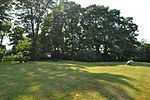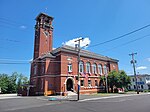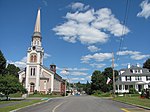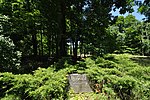Old Indian Cemetery
Cemeteries established in the 18th centuryCemeteries in Worcester County, MassachusettsCemeteries on the National Register of Historic Places in MassachusettsNational Register of Historic Places in Worcester County, Massachusetts

The Old Indian Cemetery or "Old Cemetery" is a historic cemetery at 50 Cottage Street in West Brookfield, Massachusetts. The cemetery was established in 1710 and was an active burial ground until 1849. The cemetery "is the resting place of 16 French and Indian War soldiers, 11 Revolutionary War soldiers, and 6 men who were killed in 1710 by Indians and became known as the Haymakers. It is also the resting place for Jedediah Foster, his wife and daughter, and Diederick Leertouwer." The site was added to the National Register of Historic Places in 2006.
Excerpt from the Wikipedia article Old Indian Cemetery (License: CC BY-SA 3.0, Authors, Images).Old Indian Cemetery
Cottage Street,
Geographical coordinates (GPS) Address Nearby Places Show on map
Geographical coordinates (GPS)
| Latitude | Longitude |
|---|---|
| N 42.236944444444 ° | E -72.145555555556 ° |
Address
Cottage Street 42
01585
Massachusetts, United States
Open on Google Maps











